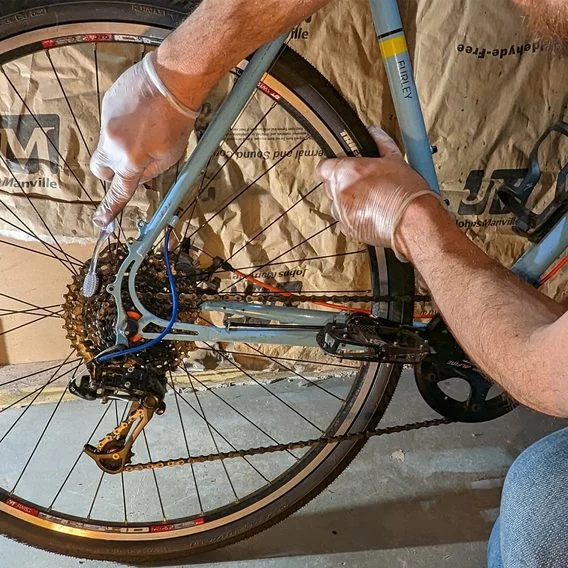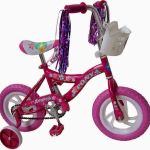
- why-cleaning-your-bike-chain-matters - Why Cleaning Your Bike Chain Matters More Than You Think
- tools-and-supplies-you-need - Tools and Supplies You Need for the Job
- step-by-step-how-to-clean-your-bike-chain - Step-by-Step: How to Clean Your Bike Chain Properly
- how-to-lubricate-your-bike-chain-correctly - How to Lubricate Your Bike Chain Correctly
- wet-vs-dry-lube-which-one-should-you-use - Wet vs. Dry Lube: Which One Should You Use?
- real-case-how-one-rider-saved-their-drivetrain - Real Case: How One Rider Saved Their Drivetrain With a Simple Routine
- how-often-should-you-clean-and-lube-your-chain - How Often Should You Clean and Lube Your Chain?
1. Why Cleaning Your Bike Chain Matters More Than You Think
Your bike chain is the literal driving force of your ride. If it’s neglected—caked in grime, rusted, or poorly lubricated—you’re not just sacrificing performance, you’re damaging your drivetrain. A dirty chain increases friction, wears down cogs and derailleurs, and can even lead to costly repairs.
Keeping your chain clean and lubricated ensures smooth shifting, quieter rides, and longer component life. It’s a five-minute task that can save you hundreds in the long run—and keep your cycling experience crisp and enjoyable.
At Cycling Guider, we frequently test chain cleaning products and lubes to find the most efficient, eco-conscious, and rider-approved solutions for every budget and climate.
2. Tools and Supplies You Need for the Job
Before diving in, gather the right tools for cleaning and lubricating your bike chain. Here’s what most cyclists use:
2.1 Chain Cleaner or Degreaser
Choose a bike-specific degreaser to avoid damage to components. Avoid harsh automotive products—they may strip protective coatings or corrode metal parts.
2.2 Chain Cleaning Tool or Brushes
A chain cleaning device makes the process faster and cleaner. Otherwise, an old toothbrush or dedicated bike brush set can work just fine.
2.3 Lint-Free Rag or Shop Towels
You’ll use these to wipe off excess degreaser and later to remove excess lubricant.
2.4 Bicycle Chain Lubricant
This comes in wet or dry formulas—more on that in Section 5. Always use cycling-specific lube.
2.5 Optional: Chain Wear Indicator Tool
Useful to check how stretched your chain is. Replacing a worn chain in time can prevent full drivetrain damage.
All of the above tools are reviewed regularly on Cycling Guider, where we help you find affordable, high-quality maintenance kits for every rider level.
3. Step-by-Step: How to Clean Your Bike Chain Properly
Cleaning your bike chain isn’t complicated, but attention to detail goes a long way. Here’s a step-by-step breakdown:
3.1 Shift Into a Middle Gear
This gives you a good chainline and makes it easier to rotate the cranks while cleaning.
3.2 Apply Degreaser
Use a chain cleaning tool or spray the degreaser directly onto the chain while backpedaling. Allow it to sit for a minute or two.
3.3 Scrub Thoroughly
If not using a chain tool, scrub the chain from all sides with a brush. Pay attention to the rollers and links.
3.4 Rinse and Dry
If using water, rinse gently and dry immediately to prevent rust. Otherwise, wipe off excess degreaser using a clean, dry rag.
3.5 Inspect for Wear
Spin the pedals and inspect for stiff links, rust, or squeaks. A well-cleaned chain should spin smoothly and quietly.
4. How to Lubricate Your Bike Chain Correctly
Once your chain is clean and dry, it’s time to lubricate. Here’s how to do it effectively:
4.1 Apply One Drop Per Link
Rotate the pedals backward and apply one drop of lube to each roller. Avoid oversaturation—more is not better.
4.2 Let It Soak
Give the lubricant 5–10 minutes to penetrate deep into the chain’s links and pins.
4.3 Wipe Off the Excess
This step is crucial. Too much lube attracts dirt and grime. Use a clean rag to gently wipe the chain while rotating it backwards.
5. Wet vs. Dry Lube: Which One Should You Use?
Choosing the right chain lubricant depends on your riding conditions.
5.1 Wet Lube
Best for rainy, muddy, or all-season riding. It clings well and provides long-lasting lubrication but requires more frequent cleaning due to grime buildup.
5.2 Dry Lube
Ideal for dry, dusty conditions. It doesn’t attract as much dirt but wears off quicker and needs reapplication more often.
If you're unsure which is best for your local trails or commute, Cycling Guider offers climate-specific lube guides tested across a wide range of riding environments.
6. Real Case: How One Rider Saved Their Drivetrain With a Simple Routine
In 2024, a rider from Seattle shared a video showing their 12-speed drivetrain after 4,000 miles—still pristine. Their secret? A strict weekly chain cleaning and lubing schedule using wet lube due to the city's constant drizzle.
They avoided chain stretch, reduced drivetrain costs, and never experienced gear skip or squeak during commutes. Their testimony sparked a wave of copycat routines among local cyclists, some of whom now swear by the same products found on Cycling Guider.
7. How Often Should You Clean and Lube Your Chain?
There’s no universal answer, but here are good general rules:
7.1 For Road Cyclists
Clean and lube every 100–150 miles, or after any rainy ride.
7.2 For Mountain Bikers
Every 2–3 rides depending on trail conditions. More if you're riding through mud or sand.
7.3 For Commuters
Once a week is usually sufficient—especially if exposed to urban grime or bad weather.
Remember: a quiet chain is a healthy chain. And for the best tools and lubes to build your routine, visit Cycling Guider—where every product is tested by real cyclists for real conditions.







 Billet BMX5.0 (2 reviews)
Billet BMX5.0 (2 reviews) Far East Children Bicycle Factory1.0 (1 reviews)
Far East Children Bicycle Factory1.0 (1 reviews) Archer Motorsports, Inc.4.0 (8 reviews)
Archer Motorsports, Inc.4.0 (8 reviews) YEP Bike Works4.0 (55 reviews)
YEP Bike Works4.0 (55 reviews) Gorham Bike & Ski4.0 (498 reviews)
Gorham Bike & Ski4.0 (498 reviews) Alchemy Bikes4.0 (37 reviews)
Alchemy Bikes4.0 (37 reviews) How to Teach Kids to Ride a Bike: A Step-by-Step Guide for Parents
How to Teach Kids to Ride a Bike: A Step-by-Step Guide for Parents Tips for Riding on Busy City Streets: Smart Strategies for Urban Cyclists
Tips for Riding on Busy City Streets: Smart Strategies for Urban Cyclists Best US National Parks for Mountain Biking: Ride Epic Trails Across America
Best US National Parks for Mountain Biking: Ride Epic Trails Across America Best Aero Helmets for Time Trials and Racing
Best Aero Helmets for Time Trials and Racing How to Clean and Lubricate Your Bike Chain Like a Pro
How to Clean and Lubricate Your Bike Chain Like a Pro 10 Must-Have Items for Long-Distance Cycling Trips
10 Must-Have Items for Long-Distance Cycling Trips